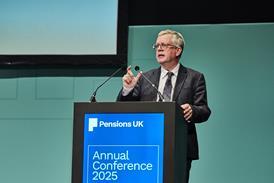Catering company Jenkinsons has auto-enrolled around 400 staff with just three opt-outs, despite enrolling a large seasonal workforce.
The seasonal nature of workers has been an issue for some companies in implementing the reform as it could place pressure on administration systems in assessing who meets the earnings threshold.
Beauty company Nails Inc raised this concern at the National Association of Pension Funds' annual conference this month, saying it would put a strain on the process if employees were enrolled over Christmas to then simply opt out in January.
I would say we’re enrolling four or five new employees a week and that will trail off until March
James Brammeld, Jenkinsons
Jenkinsons has a core staff of roughly 60 who work all year, and a pool of around 400 casual staff employed on zero-hours contracts who work during peak seasons. Just over 85 per cent of the total workforce were eligible for auto-enrolment, which the company completed in January this year.
James Brammeld, financial director at Jenkinsons, said the full-contracted staff are enrolled on a 3 per cent matched contribution, while eligible casual staff are enrolled on the auto-enrolment minimum of a 1 per cent matched contribution.
“Opt-outs have been three out of about 400 and one of those was a guy [who] was retiring,” said Brammeld. “It might go up as contributions increase.”
The company used posters and letters to communicate the changes to staff, which Brammeld credits for the scheme’s high retention of membership.
“One of the key things was just to show our employees that we’re ahead of the game with auto-enrolment,” he said.
Adam Bexson, head of SME auto-enrolment at consultancy Barnett Waddingham, said smaller employers may face unique challenges when auto-enrolling.
He gave the example of one catering company client that specialised in Japanese food. Many of the staff were Japanese students on short-term visas and were expected to leave once their visas expired.
Bexson said: “Communication was pretty key for them in terms of helping people to understand. They felt people were going to opt out.”
Sourcing a provider
Jenkinsons had an existing scheme with Scottish Widows for core staff, but transferred members into the auto-enrolment scheme run by The People’s Pension when it staged.
Brammeld said the seasonal nature of the company’s workforce meant it was still auto-enrolling members regularly.
“It’s an ongoing thing, we have quite a high staff turnover… I would say we’re enrolling four or five new employees a week and that will trail off until March,” he added.
One of the main challenges faced by the scheme was in finding a provider, as many were unwilling to work with such a fluctuating workforce.
“We got it down to about four genuine providers,” said Brammeld. “At the end we went for The People’s Pension… Months down the line the process is so smooth.”
But Bexson said it made sense commercially that providers may not want to take on certain employers if they thought their workforce would become an administrative burden.
“All employers will be able to be dealt with by someone,” he said. “It’s a case of working hard to make sure you find someone who can be be used.”
Saq Hussain, head of defined contribution consulting for PwC, said the introduction of pot-follows-member will make providers more amenable to taking on members with small pots.
However, he said the growing secondary market for auto-enrolment providers posed a challenge to smaller employers looking to stage.
“Providers want to focus their resource at that market," he said. "[Small and medium enterprises] will struggle to get the bigger providers engaged."














